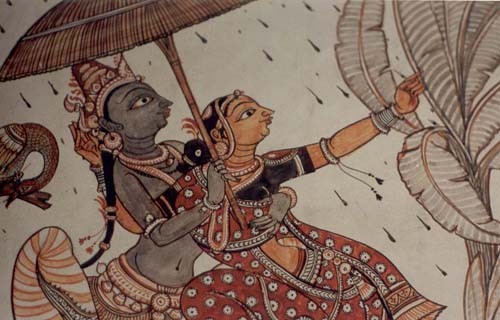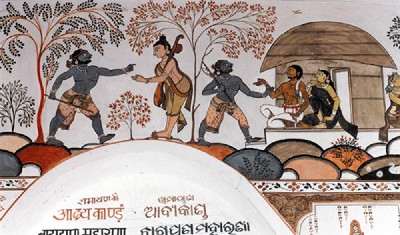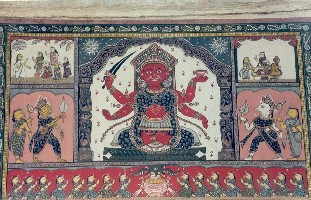Contribute
| Travel: Painted Walls Of Raghurajpur |
Sarojini Nayak
07/13/2004
A trip to the golden triangle of Bhubaneswar, Puri and
Konark remains incomplete without a visit to
Raghurajpur. Recently declared as a Heritage Village
by the Ministry of Tourism, Government of India, this
delightful hamlet set amidst lush green coconut palm
groves has been always known as an artisans’ village.
A short walk down the narrow lane with houses on
either side is like ambling down an art gallery. The
exterior walls of the houses, many of them shaded by
thatched roofs, showcase some of the finest examples
of exquisite mural paintings of Orissa. Themes and
styles are varied to present a complete picture of the
rich artistic styles of Orissan pictorial art. If one
wall has a mythological narrative, another showcases
the everyday scene from a village life. Some
paintings are replicas of wall paintings found in
temples and religious institutions in different parts
of Orissa.
The project on Revival of traditional Mural Painting
Skills supported by NORAD and implemented by INTACH
ICI, Orissa Art Conservation Centre, is indeed a
success story of retrieving a dying art and an
explicit example of conservation of our cultural
heritage.
The social and economic impact of this revival
exercise can be gauged from the increase in tourist
flow to the artisan village of Raghurajpur. The
interest shown by art patrons and various government
and non-government agencies has rekindled the
enthusiasm of the artisans. The Raghurajpur experience
has shown immense possibilities for using art
conservation as a lever for social change.
Besides revival of the mural painting skills, the
project has also revived the skills for making
traditional lime plaster using a variety of
ingredients such as lime, sand, jute molasses,
lentils, curd, extracts from fruits, etc. With the
abundant use of cement plastering, most artisans and
masons in the state had forgotten the techniques for
preparing lime plaster used earlier for construction
purposes. Besides being long lasting, lime plaster is
used as a base support for the mural paintings.
Even the pigments are made from naturally occurring
minerals such as crude cinnabar for red, orpiment as
the source for yellow and black from the soot gathered
from an oil lamp. The binding material for the
pigments are again extracts from plants like gum from
the wood apple and elephant apple. These colours are
slightly subdued in comparison to chemical colours but
have proved to last for years together and are
resistant to pests.
Women folk in artisans’ families are generally
entrusted with the preparation work such as grinding
the stones for making paints. In this revival
project, for the first time women artists came forward
and have executed beautiful paintings on the walls.
And the subjects chosen by the women artists are again
a deviation from the usually dominant mythological
stories. For instance scenes from the life in a
farmer’s village, scenes from a traditional wedding
show the sensitivity of the artists to everyday
occurrences.
The chitrakaras can be commissioned to paint similar
mural paintings elsewhere. If that is not suitable,
one can always carry back a smaller version of the
paintings in the form of a patachitra – a painting on
cloth. In fact, patachitra is the most prominent
handicraft of Raghurajpur. In ancient times when
pilgrims visited the temple town of Puri, they would
often carry back souvenirs in the form of paintings of
the deities.
Shopping for handicrafts is a fascinating experience
in Raghurajpur. Displayed on the narrow verandahs you
will find colourful masks, mud and cowdung toys, stone
statues, palm leaf etchings, and many such delightful
souvenirs. The artisans will be only too happy to show
you the wide variety of handicrafts and there is
something to suit every pocket. After all, here art
and crafts is a way of life.
Sarojini Nayak writes to us from Bhubaneswar, Orissa
You may also access this article through our web-site http://www.lokvani.com/


